
Tenerife
( 1 user review )Tenerife is the largest of the Canary Islands and is a great place to travel. British and German tourists come in their tens of thousands every year visiting its spectacular beaches and lively nightlife. It is also very popular among holiday makers from the Spanish peninsula, especially during Easter time. Tenerife is probably one of the last European paradise isles. It offers lush forests, exotic fauna and flora, deserts, mountains, volcanos, incredibly beautiful coastlines and spectacular beaches.
Understand
A poor area in decades past mostly growing bananas, the arrival of mass air travel in the 1960s has brought millions of tourists each year and a mass industry which has brought Tenerife and the other Canary Islands up to European living standards. Over the decades this has led to endless complexes being built as well as endless houses gradually turning parts of the island into a concrete jungle. While part of the EU for political purposes they remain outside its customs and VAT area making high tax goods such as tobacco and alcohol cheaper than elsewhere in Europe.
Many of the young tourists hang out on the south of the island with older and family tourists chosing Puerto de La Cruz and it´s environs. On the south side you have consistent summer, little to no wind, and pretty much perfect beach-weather for much of the year though there have been rare instances of cool to cold weather in the Jan-Feb period. Also expect some very wet days for that time of year though most days will still be sunny. There are plenty of hotels, activities and British food and drink.
On the north side of the island you will find more green, and more vibrant local culture. There is a more Spanish year-round springtime feel. The weather fluctuates a bit more here, but is also mostly pleasant though not as hot as the south.
In between the north and south of the island sits Spain's tallest peak, the barely dormant volcano El Teide (3718m above sea level). Tours used to allow people into the crater but it only needed you to move the surface layer of ash to find red hot material underneath it in places so tourists are not allowed there now.
The local currency is the Euro and most places accept credit or debit cards, which require a chip and pin. There are many exchange bureaus in the main tourist resorts but not in the Spanish places like Santa Cruz.
Cities
-
Costa Adeje
-
Puerto de la Cruz featuring Loro Parque Zoo
-
Las Americas (also Los Cristianos and Costa Adeje) a city built for tourists
-
La Laguna the World Heritage city
-
Los Gigantes tourists and locals
-
Santa Cruz de Tenerife the capital
Other destinations
Neighbouring islands are a few hours ferry ride away. La Gomera is the nearest.
Getting there
As an island the usual way to arrive is by air. There are two airports, Tenerife South (Reina Sofia) near Los Cristianos and Tenerife North (Los Rodeos) by La Laguna. Buses run from both airports to other towns, though you may have to change routes. They stop around midnight and start again around 5-6AM.
Trasmediterranea run a weekly ferry from Cadiz in Spain which takes two days.
There are also ferries to the other Canary Islands, going to Gran Canaria from Santa Cruz de Tenerife (about €80 return) and La Gomera from Los Cristianos.
Traveling around
A hire car is the best option for discovering the remote wilderness regions. Reputable companies include , , , , . TITSA buses cover most of the island and the buses are fairly frequent. A BONO travel card is a good idea if you intend to spend some time travelling on the buses as they can save 50-70% on journey costs. Only one card is needed by any number in a group and can be bought at bus stations as well as some tobacconists. EasyJet currently have an arrangement with EasyCar to offer a discount
SatNav Tenerife is building many new roads including some major routes. The latest TomTom maps while useful for getting around Tenerife overall, are not very accurate (using maps correct as of 6th March 2009).
See
El Teide
From the car park, tourists can take the 10 minute cable lift to 3550 m (25€ per person/each way). To climb to the summit (the uppermost 168 m) special permission is essential by request to the National Park Office in Santa Cruz. From the top there is an amazing view all over the island.
The ascent by foot starts at the base of the “Montaña Blanca”, at an altitude of 2200 m (very limited parking). Don't underestimate the short walk as the gradient and low oxygen levels make it challenging even for experienced walkers. After a relatively gentle start up a 4x4 track for around 4 km, you begin the steep and spectacular climb, ascending 530 m in just over 1.5 km, when you will reach the recently rebuilt Altavista Refuge (3270 m). This offers climbers a bed for a maximum of a night and kitchen facilities. After a further kilometre and 250 m ascent, the path joins another leading to La Fortaleza viewpoint, which follows the contour around El Teidi to the cable lift. If required for descent, always check if the cable lift is operational before you set off, as it does not run in poor weather conditions and closes without warning. You should allow 6-8 hours for an ascent and descent on foot.
WARNING: At 3718 m (12,198 ft) El Teide is the highest mountain in Spain. The rapid ascent by cable car can lead to altitude sickness, in even the strongest climbers. If symptoms start to manifest you should descend immediately, note that at peak times the wait for the cable car descent can be over an hour. At the summit, strong winds are not uncommon which significantly reduces temperatures. Irrespective of temperatures on the beaches, a trip to Teide (or even just the National Park) can be very cold, with snow at the peak common until typically March/April on average. In winter expect a few feet of snow and ice, and strong winds so prepare accordingly.
Parque Rural de Anaga
Fantastic place to go hiking. There are some routes that you can do. In Cruz del Carmen you can find the visitor's center where you can get information about the park. Don't forget go to the Pico del Inglés viewpoint where you can see a beautiful view of the island (if the weather is good). From La Laguna you only need fifteen minutes in car to arrive. Other places are Taganana, Roque las Bodegas, Almáciga (black sand beachs).
Drives
There are some wonderful drives all around the island. There are long winding mountain roads with breathtaking scenery.
Cycling is hard to do casually although bikes are available to rent, the coastal roads are busy and there is little room for bikes except often in the gutter. However if you like cycling up hills there are plenty of steep roads to climb as soon as you leave the coastline. For those less fit, one tour company offers a car trip to the top of El Teide with a cycle down, no peddling required.
Parks
There are good attraction parks, Loro Parque Zoo for instance, in just outside the northern city of Puerto de la Cruz, which is an animal protection foundation as well as a huge animal park. Jungle Park close to the area of Los Cristianos is well worth a visit, the bird of prey show is a must. There are free bus links to the park, but getting on one to get back is not much fun! Or you will find many local shops selling excursions to these parks, tenerife sunshine.
Karting Club Tenerife
Go carts and motor bikes are raced in the main track and two sizes of cart on the kit track. Located close to playa de las Américas free bus service from and back to your hotel.
Itineraries
Things to do
Tenerife is a favoured destination for scuba divers, with numerous dive operations of all qualities and nationalities. The waters round the island are diveable throughout the year, with the temperature varying between 18 degrees in January to around 25-26 degrees in August.
Water sports are available in the south including surfing, wind surfing, speed boat parashooting and jet-ski. Nowhere seems to rent canoes.
Santa Cruz has a big market by the station on Sunday mornings. Las Americas has one Thursday and Saturday and Los Cristianos on Sundays.
Santa Cruz has a number of museums and an art gallery. Also a space museum and planetarium on a small scale near La Laguna.
Barranco del Infierno is Hell's Ravine, close to Adeje popular with hikers, you need to book to go on the walk. There is little to see but vegetation on this walk and a TINY waterfall at it´s end.
The most western point is Punto del Teno with excellent views.
Of course many visitors just want to spend their time on a beach or by the hotel swimming pool. Playa Americas beach is black volcanic sand but Los Cristianos is yellow imported sand. The black sand feels the same as the yellow but is not as pleasing to look at to many. Beaches often have sun-loungers with parasols available to hire for the day, but if you are doing this for a few days it is probably better to just buy a parasol and some beach mats.
February there is a huge fancy dress parade by locals which is said to be third in size after Rio and Notting Hill carnivals.
Tenerife is an excellent destination for hiking. There are routes for anyone, from leisurely one hour strolls to extremely strenuous full day hikes in demanding terrain with either a huge ascent, descent or both. There are several books describing hiking routes, such as two Landscapes of Tenerife books from Sunflower Books, one covering the northern side and the other covering the southern side. It's a good idea to get a guide book before you go to Tenerife, as they might be difficult to find there.
Visit the beautiful old towns of La Orotava and La Laguna, the latter being a UNESCO World Heritage Site.
Visit the world class botanical garden just above Puerto de la Cruz.
Eat
Fish is a large part of the local diet with restaurants that allow you to choose a fish from their selection (often hand caught) which they will cook for you. Black potatoes called Papas arrugadas are served unpeeled ready to be dipped into a local sauce.
As in the rest of Spain, tapas are eaten a lot with local specialities including garlic sauces, refried beans and squid. Typical Spanish meals such as tortilla (potato omlette) and paella (rice dishes) are common too.
The south is full of plenty of junk food restaurants with hamburgers, pizza, chips, etc. There are 15 McDonalds including some on the beaches. Also note that in touristic hotspots such as Playa de las Americas, menus are available in numerous languages ranging from English and German to Russian and some Scandinavian languages, making it very easy to choose even if you are not familiar with the local dishes' names or don't understand Spanish.
Lots of Chinese Restaurants are also available in Tenerife. You can eat as much as you can (buffet) paying fixed price like 6 euro, 6.50 euro, lets say the price is different according to the variety of food.
Drink
Tenerife also has a reputation for the 'booze scene', with Playa de las Americas and Los Cristianos providing ample locations for those that enjoy 24 hour clubbing & drinking. The drinks available are the same as the rest of Europe (predominantly British) with prices being slightly less than those 'back home'.
The local beer is the average tasting Dorada, available everywhere. More specialised drinks include banana liqueur.
Talk
The native language is Spanish. In the south English is spoken by everyone with German and Italian common too.
In the local dialect a soft 'c' is pronounced as 's' rather than as 'th' on the Spanish mainland, so cinco (five) is 'sinko', not 'thinko'.
Safety
is generally a safe place to visit but as always, beware of pickpockets. Walking alone late at night is not advisable as there are a sizeable number of illegal immigrants and local youths who have been known to take advantage of the lone late night reveller. Taxis are widely available, and not too badly priced though a taxi from the southern airport to Puerto Cruz is VERY expensive.
The local police take a dim view of any form of trouble, and will arrest not just the culprits but anyone they suspect was involved. This will involve at least a 24 hour stay in the local jail and usually a fine, but it will not be a life-scarring experience. They will also arrest anyone who tries to sleep on a beach at night.
Take note that when walking through Playas De Las Americas there is a lot of clubs round here and some drunkeness in the night hours.
There are no scorpions or snakes to worry about. Mosquitoes can bite at night, especially away from the coast, but they do not carry malaria.
Do not take electrical items, credit cards or large amounts of cash to the beach if you plan to leave your goods unattended while swimming.
The sun is extremely strong this close to the equator so use plenty of high factor sun cream and do not sun bathe between midday and three o'clock (this is when the beaches are busiest anyway).
Learn
Don´t Buy
Many, many shops on the island selling electrical and optical goods as well as cameras. You may think you are getting a bargain from these smooth talking salesmen but you aren´t. You will overpay for something you could buy cheaper at home and even cheaper off of eBay. Your goods may be faulty. Your guarantee will probably be worthless. Your video camera may be SECAM which means a B&W picture in the UK (PAL). These shops are everywhere in the tourist areas and so many people have been cheated by them for so many years. Also, beware of places that sell video games (mainly for the Nintendo Game Boy or DS) as they are usually bootlegs.
If you are holidaying in Tenerife you are probably going to be approached by "scratchcard touts" whose main aim is to part you with several thousand pounds for worthless contracts for time-share apartments. This view is backed up by the who suggest that every year 400,000 UK consumers fall victim to these scams in destinations such as Tenerife, the Costa del Sol and Gran Canaria. On average each victim loses more than £3,000. Bogus "scratchcard touts" offer cards that will always be a winner, but to collect their prize, people need to attend a lengthy presentation and are persuaded into signing a contract for an "exclusive" club on the basis of false claims as to the price, range and quality of holidays available. The OFT's is advising people to ask three simple questions: can you take away the contract to consider at your leisure? Is everything you were promised in the presentation in the contract? Do you know exactly what you are getting for your money? If the answer to any of these questions is no, then simply walk away.
The other main irritant on Tenerife are the Lookey Lookey men who try to sell you sunglasses, watches, jewellery and other cheap knick-knacks. They are also known to sell drugs, if approached in a certain manner. They spend their days and nights trawling through the resorts approaching people on the beaches; or while walking and sitting at restaurants. A firm 'no gracias' or 'no thanks’ is enough to deter them from further approaches. It is not a good idea to start bartering with them, as you will never get rid of them, but even if they get to the point where they won't leave you alone, simply threaten to call the police (particularly if there are any officers nearby) or if you're in a restaurant, tell one of the waiters or the manager (many restaurants in Tenerife are now enforcing bouncers because of this, so don't be put off if you see large burly men standing outside the restaurant entrances).
Contact & location
1 Review
Add your review
The photos displayed on this page are the property of one of the following authors:
name_3359, name_3360, name_3361, name_3362, name_3358, name_359, name_3363, name_3104
Some photos courtesy of:
 . The photos provided by Flickr are under the copyright of their owners.
. The photos provided by Flickr are under the copyright of their owners.
This travel guide also includes text from Wikitravel articles, all available at  View full credits
View full credits
D. GuillaimeMike, Sebastian, David, Derek Hagan, jr@jriddell.org, Joe Anderson, Juan, www.rzr.online.fr, Ryan Holliday, Colin Jensen and Evan Prodromou, Burmesedays, Tatatabot, Tenerife sunshine, Mr T, Ypsilon, Emma Perez, Texugo, Episteme, Masiat, Nils and Huttite
This travel guide also includes text from Wikipedia articles, all available at  View full credits
View full credits
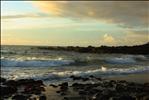
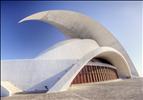
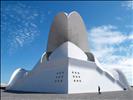
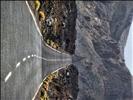
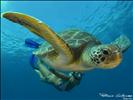




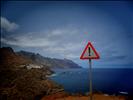
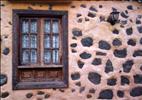

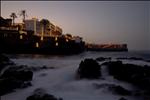
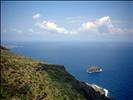
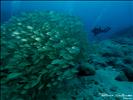
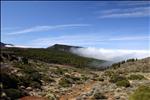

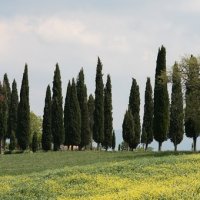











I liked
It's an amazing place. Paradise on earth - you have to visit it.I disliked
Nothing